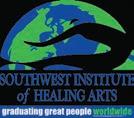

HEALTHY LIVING | HEALTHY PLANET FREE Keep It Cool JULY 2024 METRO PHOENIX & NORTHERN ARIZONA EDITION






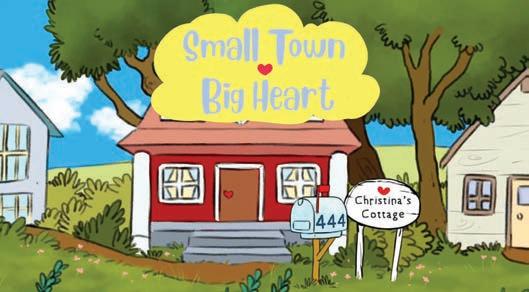


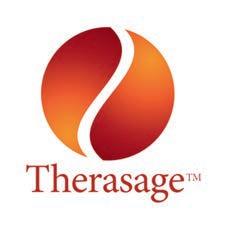

Therasage is the gold standard for energy healing, naturally healing infrared, negative ions and eliminating EMFs.
Therasage.com
Scan to register for educational webcast to learn more.


Scan to learn more and subscribe.

CREATIVE PLAY, TIME IN NATURE, & POWER OF THE HEART! SUBSCRIBE today!

Founded in 1932, Boiron, the world leader in homeopathic medicines, is best known for its popular Arnicare® line of pain relievers and Oscillococcinum® flu reliever.
BoironUSA.com
Save 20% with code NA20
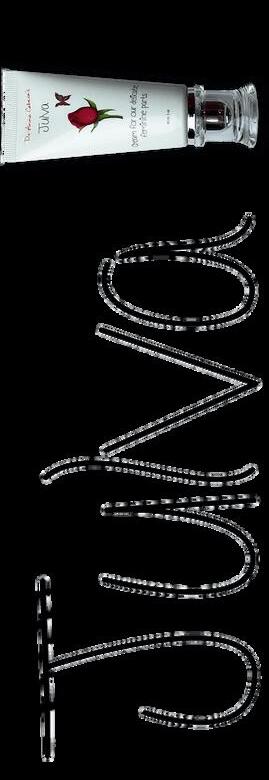
OB/GYN-formulated Rejuvenates vaginal tissue, restores natural moisture, and helps prevent bladder leaks.


DrAnnaCabeca.com/ products/julva A NEW fun and interactive series dedicated to the health and well-being of Preschoolers and their families. WORLD MUSIC, MOVEMENT, MINDFULNESS,

NATIONAL PRODUCT PICKS
Move with our adorable Chakra Love Bugs ❤ World Music ❤ Movement ❤ Mindfulness ❤ Time in Nature ❤ Power of the Heart ChristinasCottage444.com A Heartfelt, Fun and FREE YouTube Musical Series Dedicated to Nurturing the Health and Well-Being of Preschoolers and Their Families Meet the Love Bugs:









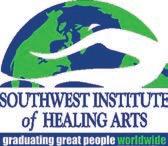




ONLINE EXCLUSIVES NaturalAZ.com VISIT US ONLINE @ Find additional articles online at NaturalAZ.com. Go to the homepage and explore local businesses and articles exclusively from Natural Awakenings SHARE YOUR COMMENTS JOIN US ON: COMMUNITY SPONSORS MyNaturalDentist.com Natural Dental Partners SWIHA.edu HEALTHY LIVING | HEALTHY PLANET FREE Keep It Cool JULY 2024 METRO PHOENIX & NORTHERN ARIZONA EDITION Calendar Check out the latest events at NaturalAZ.com/calendar MyLeadingEdgeWellness.com Mark J. Tager on Secrets to a Glowing Complexion Global Briefs Sperm Defy Newton’s Law of Motion Coffee Alternatives Remnants of Another Planet in Earth’s Mantle Health Brief
Wise Words Eduardo1961 from Getty Images Sara from Pexels/CanvaPro lucentiuss from Getty Images Signature/CanvaPro
Courtesy of Mark J. Tager



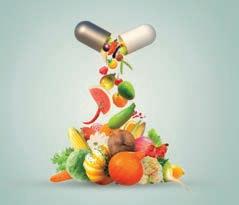
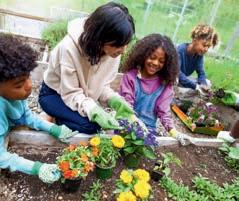

7 July 2024 Contents 10 Health Briefs 12 Global Briefs 13 Business Spotlight 14 Feature Story 18 Eco Tip 20 Conscious Eating 24 Technology Spotlight 25 Inspiration 26 Green Living 28 Fit Body 30 Healing Ways 32 Healthy Kids 34 Natural Pet 36 Business Directory 38 Mark Your Calendar 39 Farmers Markets Departments Advertising To learn more about advertising, visit NaturalAZ.com/pages/advertise. The deadline for ads is the 10th of the month prior to the next edition. Own Your Own Franchise Make a difference in your community. Become a Natural Awakenings Franchise owner. Visit: Corp.NaturalAwakenings.com. 14 20 26 32 13 Elevate Your Smile 14 Ayurvedic Seasonal Eating 17 The Impact of Nutrition on Oral Health 18 Chemical-Free Weed Control 20 Nourish Skin From Within 24 Revolutionizing Bone Health 25 Celebrating Unseen Milestones 26 Farm Foods in a Capsule 28 Summer Splash 30 The Kindness Cure 32 Planting Seeds of Knowledge 34 Taking Dogs for a Swim
PHOENIX & NORTHERN ARIZONA EDITION
Publisher Tracy Patterson, BSc, MES
Design & Production Vegetorium, LLC
Copy Editor Sara Gurgen, MS
Digital Platforms Hass Solutions Locable
CONTACT US
Natural Awakenings – Phoenix 3260 N Hayden Rd, Ste #210 Scottsdale, AZ 85251
Tracy@NaturalAZ.com NaturalAZ.com
NATIONAL TEAM
CEO
Kimberly B. Whittle
National Editor Sandra Yeyati
Editor Brooke Goode
Copy Editor/Proofing Melanie Rankin
Layout Flip180 Media
Cover image nomadsoulphotos_CanvaPro
© 2024 by Natural Awakenings. All rights reserved. Although some parts of this publication may be reproduced and reprinted, we require that prior permission be obtained in writing. Natural Awakenings is a free publication distributed locally and is supported by our advertisers. Please call to find a location near you or if you would like copies placed at your business. We do not necessarily endorse the views expressed in the articles and advertisements, nor are we responsible for the products and services advertised. Check with a healthcare professional regarding the appropriate use of any treatment.


Kindness
This month’s Healing Ways article, on page 30, reminded me of an interesting call I had with a tech support agent a while back. My email wasn’t working, so I had to summon up the energy to call someone for help. As many of you know, this can be quite a daunting process, and I determined ahead of time that I would keep a cool head with the person on the other end of the line.
The nice young man was very good natured as he kept asking me if I saw this or that, and I kept saying that I couldn’t see what he was talking about. This went on for a bit until he realized I didn’t have administrative access to my own email account. So that was the first thing he set about fixing.
I mentioned that it must be challenging to work with people all day long, many of whom don’t know anything about technology. His response was: “Well, I get two kinds of people on the line: those who want and take my help and those who shout at me. I’m just happy that you’re someone who doesn’t shout at me!” I found that to be an intriguing answer. He wasn’t concerned with how long it took or how many times he had to explain something. In other words, he had all the patience in the world. He cared only about the fact that I wasn’t yelling at him!
I told him that in the past I had fallen into the trap of getting angry at the agent on the phone because I was frustrated that something wasn’t working, but I learned that it didn’t get me any closer to resolving the problem and that, after all, the person was trying to help—it wasn’t their fault that something went wrong with the technology.
The phone call went on, and we were both relaxed and simply jumping through all the hoops to get the issue rectified. At one point, he said something that made me chuckle, and his response was: “It’s so nice to hear a customer laugh!”
We eventually got it all sorted out, and my email worked! And without one harsh word from either of us. This experience served as a reminder to me to always be intentionally kind—to actually think to myself, “I will be kind no matter what happens in this situation.” The effect we have on others (and ourselves!) is more dramatic than we might think.

8 Metro Phoenix & Northern Arizona Edition NaturalAZ.com Publisher’s Letter
HEALTHY LIVING HEALTHY PLANET



9 July 2024 Finding you a home where you will thrive. Selling your home for the highest value. Combining with www.WooWooAgent.com Powered by Brokers Hub Realty, Phoenix AZ ASSOCIATE BROKER & CERT. FENG SHUI CONSULTANT 602.292.0622
New Bathroom Tech to Monitor Health
Imagine a toilet that not only cleans itself but also performs a urinalysis to detect hydration levels, urinary tract infections and kidney issues. A trip to the restroom may be the first step in monitoring and maintaining health and wellness, as a number of new products with medical monitoring features are finding their way into the latest bathrooms.
Toi Labs makes smart toilets equipped with advanced sensors that non-invasively monitor fluid intake levels, stool and urine contents, and other vital health metrics without any burden to the user. Withings, a French company, offers a toilet device that detects a large variety of biomarkers found in urine and offers actionable advice for improving health.
CareOS has unveiled the first AI-powered smart mirror for mental wellness that the company asserts can identify mood and help manage stress. Look into the mirror for skin care recommendations and how to correct yoga poses. A Canadian company, NuraLogix, offers a mirror that detects blood pressure and vital signs and assesses disease risk. A 2020 study found that smart floor sensors could be used to predict fall risk and signs of illness. Smart bath maker BBalance is hoping to launch a mat next year that can measure weight and body composition, and detect posture and balance to predict the risk of neurodegenerative disease.


In Vivo Gene Editing
Several companies are experimenting on human subjects to develop gene editing that is performed inside the body. Such therapies differ from a recently approved treatment for sickle-cell anemia that removes bone marrow from the body before editing the genetic material and reintroducing it into the patient.
Intellia Therapeutics and Regeneron Pharmaceuticals are in clinical trials to use gene editing to knock out a gene that causes fibrous protein clumps, which can accumulate in organs and nerves, increasing the risk of heart failure and other serious complications. Verve Therapeutics is enrolling patients to test a geneediting protocol designed to reverse the effects of a genetic disease that leads to severely elevated cholesterol and increased risk of early-onset cardiovascular disease. One caveat: These therapies carry the risk of editing unrelated genes.


10 Metro Phoenix & Northern Arizona Edition NaturalAZ.com Health Briefs
cz from Getty
Phira Phonruewiangphing from Getty Images Elnur/CanvaPro
andriano
Images/CanvaPro
Detecting Cancer Early
Cambridge University’s Early Cancer Institute recently received an $11.7 million anonymous donation to further its research. The Institute is focused on detecting cancers before they produce symptoms and spread, which then requires expensive medical treatments that are not always effective. One team there is using 200,000 blood samples taken 10 to 20 years ago from ovarian cancer screening participants to identify genetic markers in those that later developed the disease.
Another team developed a cytosponge to collect cells and identify a protein associated with precancerous esophageal cancer. The Institute also has a team that is trying to pinpoint the biomarkers associated with prostate cancer. Their goal is to assist in the development of new and more effective ways to treat cancer.


www.EckankarArizona.org
Pregnancy Adds to Women’s Biological Age
A study by the Columbia University Mailman School of Public Health and published in Proceedings of National Academy of Sciences quantified the effect of pregnancy on biological aging. The study included more than 1,700 men and women from the Philippines aged 20 to 22 years old. The researchers concluded that the energy expended in reproduction comes at an expense. Across six epigenetic clock measurements, pregnancy was found to accelerate the women’s biological aging compared to those that had no pregnancies, and multiple pregnancies accelerated the women’s biological age on two of the epigenetic clock measures. Pregnancy did not result in aging of the men in the study.


11 July 2024
Business Images/CanvaPro
Thicha Satapitanon from Getty Images/ CanvaPro Monkey
Mammoth Pollution Vacuum
The world’s largest pollution vacuum started operating in May. Built in Iceland by Swiss company Climeworks, the direct air capture and storage plant named Mammoth is designed to draw in air, filter out up to 36,000 tons of carbon dioxide annually and either store it permanently underground, reuse it or transform it into solid products.
This is the second large-scale carbon vacuum by Climeworks. Its predecessor, which launched in 2021, captures 500 tons of CO2 each year. Both facilities are powered by a geothermal power plant. According to Jan Wurzbacher, co-founder and co-CEO of Climeworks, the company intends to scale up its technology to remove 1 million tons of carbon per year by 2030 and 1 billion tons by 2050.

Wild Orangutan Treats Own Wound
According to a scientific article published in Nature, a male Sumatran orangutan was observed self-treating a facial wound with medicinal plants in Southeast Asia. Three days after the injury, he ripped off leaves from a liana vine, chewed on them and applied the resulting juice onto the wound. As a final step, the orangutan covered the wound with the chewed leaves. The liana is a tropical plant that has antibacterial, anti-inflammatory, antifungal and antioxidant properties. This is the first documented case of wound treatment by a wild animal, providing insight into the origins of human wound care.

Acknowledging Animal Consciousness
For most of human history, the possibility that animals experience sensations and feelings has been dismissed. The New York Declaration on Animal Consciousness, which is signed by nearly 300 university educators and scientists worldwide, challenges this view. The signatories assert that there is “strong scientific support for attributions of conscious experience to other mammals and to birds,” and that “the empirical evidence indicates at least a realistic possibility of conscious experience in all vertebrates (including reptiles, amphibians and fishes) and many invertebrates (including, at minimum, cephalopod mollusks, decapod crustaceans and insects).”
The declaration is supported by 10 years of scientific discoveries about the possibility of animal sentience, including crows that can be trained to report what they see, octopuses that avoid pain and value pain relief, cuttlefish that remember details of specific past events, zebrafish that show signs of curiosity, and bees that display apparent play behavior. The signatories conclude, “When there is a realistic possibility of conscious experience in an animal, it is irresponsible to ignore that possibility in decisions affecting that animal. We should consider welfare risks and use the evidence to inform our responses to these risks.”

12 Metro Phoenix & Northern Arizona Edition NaturalAZ.com Global Briefs
MichaelNivelet from Getty Images/CanvaPro Climeworks/Canvapro 263582 from Pixabay/Canvapro
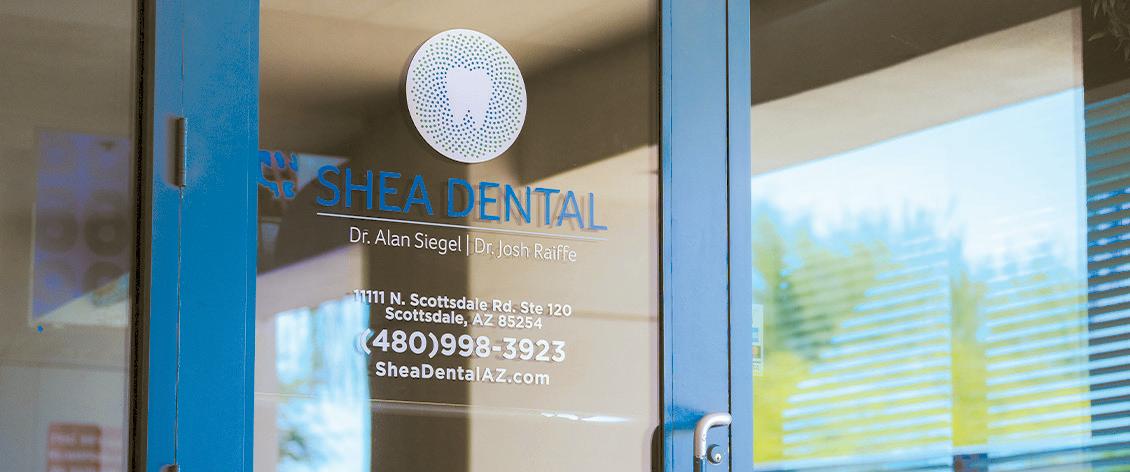
Elevate Your Smile
Holistic Dentistry for Total Wellness
Prioritizing the health and appearance of your smile is essential for overall well-being. Many individuals delay dental visits, only to discover severe issues that require extensive treatments. These problems could often be prevented with routine dental care. Regular checkups are key to maintaining healthy and happy teeth.
At Shea Dental, in Scottsdale, Dr. Josh Raiffe offers comprehensive dental care tailored to each patient’s needs. Whether you’re seeking routine maintenance or specialized treatments, Dr. Raiffe and his team are dedicated to enhancing your oral health. They adopt a holistic approach, recognizing the profound impact dental health has on heart health, emotional well-being and overall quality of life.
Dr. Raiffe is accredited by the International Academy of Oral Medicine and Toxicology (IAOMT), a testament to his expertise in biological dentistry. This accreditation highlights his commitment to understanding how dental health interconnects with
overall biological health, boosting patient confidence and well-being. Notably, Dr. Raiffe is one of only two dentists in the Phoenix Valley with this distinction, assuring patients of his exceptional qualifications.
Shea Dental offers a wide range of services designed to promote confident and healthy smiles, including:
• SMART Mercury Filling Removal: Safe removal of mercury fillings.
• C one Beam CT Scanner: Advanced 3D imaging technology for precise diagnostics.
• CEREC Milling: On-site creation of perfect restorations.
• PRF, SRP and Ozone Treatments: vative therapies for improved oral health.
• L aser Fillings: Minimally invasive cavity treatments with no pain.
• Veneers: Enhancing the appearance of teeth.
• Invisalign: Clear aligners for straighten ing teeth.
• 3D Printed Night Guards: Custom protection for teeth while sleeping.
• Dental Implants: Permanent solutions for missing teeth.
• Sleep Apnea Treatments: Addressing sleep-related breathing issues.
• Wand Single Tooth Anesthesia Device: Pain-free anesthesia for single tooth procedures.
Dr. Raiffe has curated an exceptional dental team, renowned for providing top-tier services. Understanding the significance of good oral hygiene and patient comfort, Dr. Raiffe ensures a reassuring and caring environment for all patients.

Dr. Raiffe’s dedication to holistic dentistry makes Shea Dental a premier choice for dental care in Scottsdale. To schedule an appointment, call 480-998-3923 or visit SheaDentalAZ.com. For more information, see our advertisement on page 5.
13 July 2024
Business Spotlight Advertorial
Ayurvedic Seasonal Eating
How to Balance Doshas With the Right Foods
by Carrie Jackson
Each season brings a unique bounty of fresh food to sustain and nourish us. A ripe tomato off the vine in the summer or a hearty winter squash stew highlights what the Earth naturally offers. Seasonal eating is a rhythmic approach that is more sustainable than relying on grocery-store staples and connects us to the world around us. Combining seasonal eating with the Ayurvedic concept of balancing our doshas helps to maintain harmony with nature. It also helps support local farmers, reduce carbon emissions, maximize the food’s nutritional value and nourish holistically.
The Fresher the Better Seasonal eating is intuitive, but modern technology and busy lifestyles get in the way. “For thousands of years, people ate seasonally all the time, as there was no other option,” says Erin Casperson, director at Kripalu School of Ayurveda, a global leader in mindfulness education. “They trusted that each harvest gave us exactly what we needed to survive and thrive. It is only recently, with the development of refrigeration and modern transport, that we are able to access food from other areas of the world and store it for long periods of time.”
Eating local food when it is fresh not only helps to maximize the food’s nutritional value, it strengthens our connection to its origin. “From an Ayurvedic perspective,
we look at the prana, or life force, in food,” explains Casperson. “Generally, the shorter it’s been off the plant, the more life, or nourishment, it will supply. When it’s treated with pesticides and sits in storage or refrigeration for days or weeks, it starts to lose that life force. Looking at a freshly picked strawberry, you can see the value it has. If I pick up a plastic box of spinach at the grocery store, there’s no connection. I have no idea how long it’s been traveling or what it’s been exposed to.”
Kadiatou Sibi, a board-certified Ayurvedic and reiki practitioner and founder of Los Angeles-based A Web of Wellness, recommends frequenting farmers markets, co-ops and grocery stores that offer locally grown food to maximize freshness. “Consuming foods during their harvest honors the natural cycle of the Earth. The crops are brighter, tastier and more nutritionally dense. By purchasing food from a [farmers] market, you are supporting marginalized communities, which historically are often women and families working in the fields. Cultivating locally grown foods also helps to maintain the biodiversity of crops and prevents big corporations from taking over the land.”
Cutting out long-distance transportation doesn’t just increase the food’s freshness, it is better for the environment, too. “When we eat locally, we lower the
carbon footprint and greenhouse gas emissions it takes to access the food. It also eliminates the need for pesticides and other harmful agents that make the food last longer,” Sibi explains.
Eating seasonally is a cornerstone of Ayurvedic practices, which Sibi says are rooted in a deep connection with nature. “The idea of seasons is based around the cycles of the moon and sun,” she asserts. “Food is one important way we can balance ourselves holistically. Seasonal eating teaches us to wait for the right time and not rush nature. We can look forward to watermelon in the summer and Brussels sprouts in the winter. We learn to cultivate deep gratitude and respect for the land and all it provides for us. It fosters deep stewardship for the Earth.”
Balancing Our Doshas
Incorporating the Ayurvedic understanding of doshas into our diet further supports our connection to nature and intuitive eating. “According to Ayurveda, everything and everyone is comprised of five elements: space, air, fire, water and earth,” says Veena Haasl-Blilie, founder of Minnesota-based Saumya Ayurveda. “These elements combine to form three basic energy properties called the doshas. These foundational energies, known as vata, pitta and kapha, are the building blocks of our universe. While all three doshas are present in every one
14 Metro Phoenix & Northern Arizona Edition NaturalAZ.com Feature Story
of us, they manifest to varying degrees. Our distinct physical, mental and spiritual traits are the result of our unique dosha constitution.”
Disruptions in our daily routines, stress and diet changes can cause doshas to get out of balance. By mindfully incorporating dosha-balancing foods and herbs into our day, our bodies and minds can reset. “In Ayurveda, food is medicine. When we eat to balance the doshas, we are eating in the most supportive and nourishing way possible,” explains Haasl-Blilie. “Instead of a one-size-fits-all diet, we are eating what is balancing to us specifically in that season.”
Understanding an individual’s own dosha type is a key starting point. HaaslBlilie recommends, “Fiery pitta is best balanced through naturally sweet foods like fruit, most grains, squash, root vegetables, milk and ghee. The best tastes for balancing pitta are sweet, bitter and astringent, while sour, salty and pungent tastes should be minimized. Airy
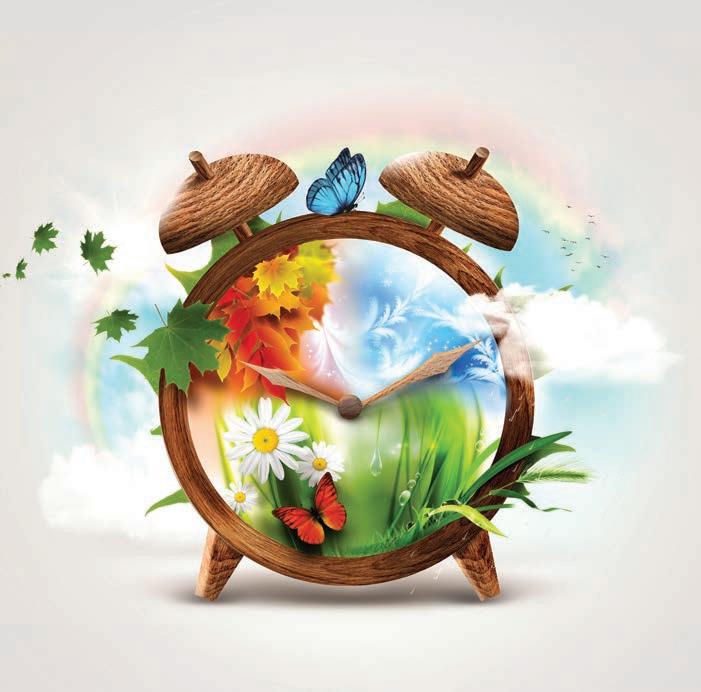

15 July 2024
from Getty Images/CanvaPro
Zffoto
vata has a cold, dry, light nature that can be countered with foods that are warm, moist and grounding, such as hearty soups and healthy fats. Sweet, sour and salty foods help to balance it. For kapha’s cool, dense, oily nature, we should favor food that is light, dry and easy to digest, ideally served warm or hot with invigorating herbs or spices. Sweet, sour and salty tastes should be minimized.”
Cooking with seasonal food that supports dosha balance helps to further nourish holistically. Chef Divya Alter is a cookbook author and the co-founder of Divya’s, which combines culinary education, good-for-you packaged foods and a plant-based restaurant in New York City. Aiming to offer practical ways to bridge the ancient wisdom of food with modern living beyond the boundaries of India, she notes, “Part of my mission is to show people how to apply the universal Ayurveda principles to every part of the world, incorporating the ancient principles of food compatibility and digestion into local cuisines.”
The Joy of Summer Foods
Alter says that in warmer months, choosing balancing foods helps to naturally regulate our bodies and our doshas. “Summer is the season of outdoor activities, travel, vacationing and more. The heat and exertion tend to deplete our systems, but nature’s peak harvest season provides us with abundant produce to help us replenish. Ayurveda is all about balancing with nature, so in the hot summer, when we tend to sweat more and feel dehydrated, we need to incorporate cooling and hydrating foods. We feel extra pleasure eating the juicy seasonal fruits like peaches, apricots, berries and watermelon because they quickly cool and nourish us. Zucchini, fennel, leafy greens, okra, carrots and green beans are all great vegetables to give us minerals, vitamins and fiber, plus keep our bodies cool. Coconut in

every form is our best friend in summer because it is very cooling and nourishing. Fresh coconut water is the best natural electrolyte drink, and you can add fresh coconut milk to your curry or smoothie. For plant-based protein, mung beans and red or green lentils are all great choices.”
For a simple complement to any dish, Alter recommends using fresh herbs, most of which can be grown locally. “Cilantro, basil, parsley, dill, rosemary, thyme, curry leaves and tarragon, and the cooling spices such as coriander, fennel, cumin and cardamom, add flavor without overheating the body. I use very little or no chili, and if my digestion needs a bit more heat, then I’d use warming spices like black pepper, turmeric, cinnamon and ginger in small amounts,” she says.
Sibi points out that using fresh herbs and spices while cooking also helps to preserve cultural traditions. “While they may not have originated here, locally grown and ethically sourced herbs honor global cooking and customs,” she says. “Incorporating fresh cilantro into a Mexican dish, turmeric into an Indian recipe, or parsley
into a Mediterranean meal reminds us of their origins. Besides the medicinal benefits, the flavors are more palatable, and it’s a valuable way to teach these traditions to a younger generation. They learn that what you put in your mouth doesn’t just affect you, but has a larger global impact.”
While this may seem like a lot to consider when making daily food choices, Casperson recommends starting with seasonal eating and balancing our doshas using ingredients that are readily available. “Seasonal eating is more accessible, because you can literally choose what to eat by what is in the market. From there, have some fun with it,” she suggests. “Look up recipes and menus that you can easily digest to support your dosha balance, and add in herbs grown in your own garden. Sit down and eat in a relaxed setting without distractions and really connect with how you’re nourishing yourself.”
Carrie Jackson is a Chicago-based freelance writer and frequent contributor to Natural Awakenings. Connect at CarrieJacksonWrites.com.
16 Metro Phoenix & Northern Arizona Edition NaturalAZ.com stux from pixabay/CanvaPro
Feature Story
The Impact of Nutrition on Oral Health
by Ranine Jaber, DMD
Good oral hygiene is only one piece of the puzzle for maintaining a healthy mouth. The nutritional value of the foods we eat, combined with consumption frequency, plays a consequential role in the development of tooth decay. Understanding the significance of pH levels in our mouths during cavity formation can help clarify this process.
The normal resting pH level in the mouth is around seven, which is neutral. When we consume carbohydrates, our saliva breaks them down into simpler sugars that are easier to metabolize. The bacteria in our mouths consume these sugars and release lactic acids, lowering the pH and creating a more acidic environment. As the pH drops and becomes more acidic, demineralization occurs. This means minerals like calcium are pulled out of the tooth, making the enamel more susceptible to cavities. Saliva plays a crucial role in remineralization and buffering after an acid attack, whether
from acidic foods and drinks or bacterial byproducts. This is why patients with dry mouth often have several cavities, especially along the gum line. It can take 20 minutes or more for saliva to buffer and return the pH to its resting level.
Consider this scenario: two people go to a coffee shop and order vanilla lattes. One finishes their drink within 10 minutes, while the other sips it periodically over a couple of hours. Who is at higher risk for cavities? Although they consumed the same amount of sugar, the second person, by savoring their drink and sipping on it over the course of two hours, exposed their teeth to lower pH levels for longer periods. These up and down spikes in pH levels can give bacteria an upper hand.
Most of us know that sugar is bad for our teeth. However, this includes not only table sugar but also starches, carbs and fruits, which can have high sugar levels. I have several patients that drink lemon water every morning for its health benefits, but the daily acid attack on the teeth can lead to cavities, even if they brush and floss every day.
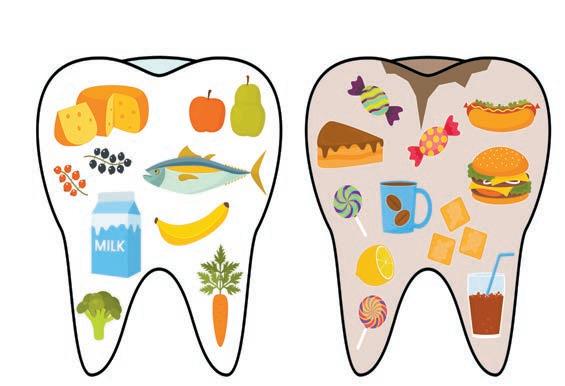
Introducing more alkaline foods into your diet can help balance acid levels and lower
cavity risk. Animal proteins, cheese, nuts and raw high-fiber vegetables place a protective coat on the teeth and neutralize the acid.
Patients should consider saliva testing to determine the type of bacteria present in their mouths, their pH levels and buffering capacity. Understanding what is happening in your body can influence your decisions and overall health. Incorporating a balanced diet rich in essential nutrients is vital for maintaining optimal oral health. By paying attention to what we eat and making smart food choices, we can support strong teeth and gums and enjoy a lifetime of healthy smiles.

Dr. Ranine Jaber enjoys the creativity involved in dentistry when it comes to improving the balance and architecture of the teeth. She is deeply committed to restoring both her patients’ smiles and oral health using a comprehensive vision and conservative approach. Combining a light touch with a wide variety of options leads to the best and most personalized results for each person, and she can’t wait for you to experience this for yourself. Natural Dental Partners (602-775-5120) is a health-centered dental practice in North Scottsdale. Visit MyNaturalDentist.com for more information. See ad, pages 3 and 15.
Advertorial
17 July 2024 pogorelovaolga/123rf.com
Chemical-Free Weed Control
In every garden’s life, there comes a time when weeds attempt to take over, turning what was once a serene escape into chaos. But combatting weeds does not require a chemical solution. By adopting these eco-friendly practices, we can maintain soil health and biodiversity, eliminate toxin exposure to people and pets, contribute to healthier air quality and lower the cost of weed management.
• Plant Spacing. Plants need space to grow, but too much of an open area can lead to weed proliferation. The goal is to keep plant spacing narrow enough to create a canopy that limits sunlight to areas where weeds would otherwise flourish. For an optimal garden layout, follow the instructions that often come with purchased plants or seed packets, or use an online space calculator like ViteGreenhouses.com/plantcalculator.asp.
• Solar Power. Covering the soil with clear plastic during warm months creates a greenhouse effect that heats the soil, killing weed seeds and harmful pathogens. It’s a great way to prepare garden beds without lifting a hoe.
• Mulch Magic. A thick layer of organic mulch comprised of wood chips, straw or grass clippings is a formidable barrier against weeds. Mulch offers the added benefits of regulating soil temperature, retaining moisture, providing nutrients, preventing erosion and inviting beneficial earthworms.
• Hand Weeding. There’s something meditative about getting down on hands and knees and connecting with the garden.
Pulling weeds removes invaders directly from the root, preventing regrowth.
• Natural Predators. Birds, insects and even certain types of fungi feast on weed seeds. Installing bird feeders and creating habitats for beneficial insects can tip the balance in the garden’s favor.
• Boiling Water Blitz. For the toughest of weeds sprouting in cracks and crevices, pouring boiling water directly onto them will cook them from the inside out. Just be mindful of surrounding plants.
• Vinegar Solution. Spraying a vinegarbased solution directly onto the leaves of
unwanted plants can dehydrate and kill them, making this a quick and easy spot treatment. Vinegar is non-selective, so precision is key. Martha Stewart’s recipe includes a well-combined mixture of one tablespoon of dish soap, one cup of salt and one gallon of white vinegar.
• Soil Health. Robust soil is the foundation of a thriving garden and a natural deterrent to weeds. Regular supplementation with compost and organic matter improves soil structure and fertility.
• Native Plants. Selecting plants that are native or well-suited to the area’s climate and soil conditions creates a resilient ecosystem. Such plants are more likely to thrive and outcompete weeds, reducing the need for maintenance.
• Barrier Methods. For particularly vulnerable areas, physical barriers such as landscape fabric or cardboard can prevent weeds from taking root. Covered with mulch, they blend seamlessly into the garden.
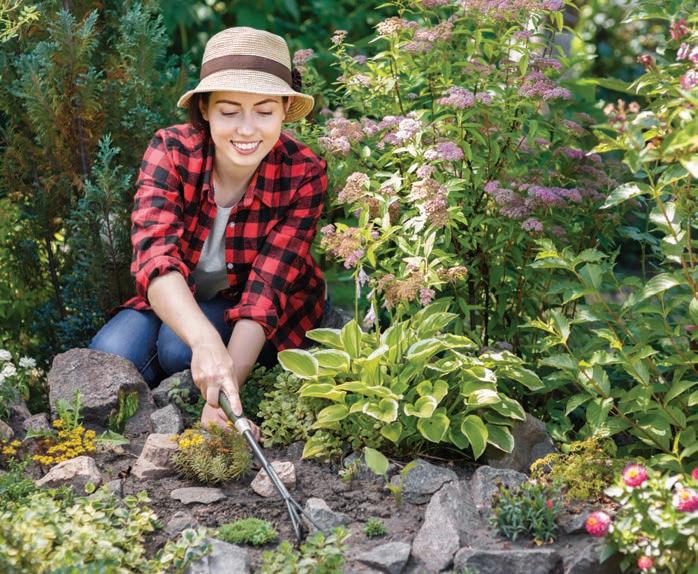
18 Metro Phoenix & Northern Arizona Edition NaturalAZ.com Eco Tip
Alter photo from Getty Images/CanvaPro







19 July 2024 Work from and what you do. A LIFE-CHANGING OPPORTUNITY Natural Awakenings is celebrating our 30th year anniversary and growing! OWN YOUR OWN FRANCHISE Call today: 239.206.2000 Scan code to learn more.
Nourish Skin From Within
Foods That Enhance Health and Radiance
by Maya Whitman
Our skin is the largest human organ. In addition to protecting us from ultraviolet radiation, bacterial invaders and chemicals, it also provides a visual record of the human story, as it is vulnerable to emotional stress, hormonal rhythms and poor diet. While more research is needed, there is growing evidence that food can be an ally for resolving stubborn acne, preventing certain types of skin cancer and aging gracefully. According to a clinical review published in the journal Medicina, nutrients like vitamins A, C, D and E, as well as omega-3 fatty acids, may be beneficial for atopic dermatitis and psoriasis.
“The global market for skincare topicals is estimated at around $180 billion,” says Mark Tager, M.D., an integrative healthcare synergist in San Diego, California, and author
of Feed Your Skin Right: Your Personalized Nutrition Plan for Radiant Beauty. “There are some topicals with ingredients that do penetrate the skin. For the most part, these approaches pale in comparison with the power of an inside approach to skin health and beauty.” He reminds us that what we consume is reflected in our skin.
Gut Health and Glowing Skin
Emerging research published in Gut Microbes in 2022 shows the relationship between intestinal flora and skin health and proposes the value of supplemental prebiotics, probiotics and fermented foods. “Trillions of organisms—mainly bacteria in our gastrointestinal tract—produce vitamin K, neurotransmitters and short-chain fatty acids, each of which plays a role in skin health,” says Tager, highlighting the microbe
Akkermansia muciniphila, which produces acetone. “People with acne have much lower levels of this short-chain fatty acid in their skin microbiome. Raising the acetate levels, along with changing the ratio of good-tobad gut bacteria, can help with acne.” Tager recommends eating fiber, which is the preferred food of the good bacteria like Akkermansia, as well as taking probiotics.
Deanna Minich, a nutrition scientist, functional medicine practitioner and author of The Rainbow Diet: A Holistic Approach to Radiant Health Through Foods and Supplements, concurs, “An imbalance in the microbiome has been linked to acne. Eating a diverse, colorful, plant-rich diet is a wonderful way to promote a healthy balance of gut bugs.” For acne, she lauds the benefits of green tea.


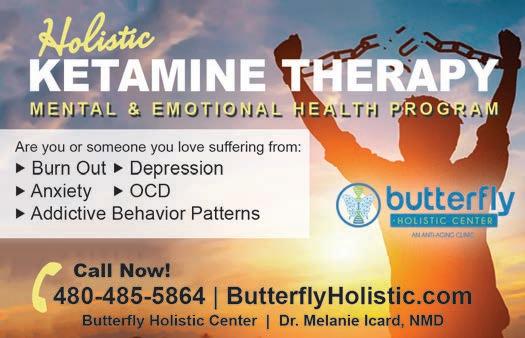
20 Metro Phoenix & Northern Arizona Edition NaturalAZ.com Conscious Eating
6102 N 16th ST PHX 85016 480-737-0867 handcrafted, sustainable goods & botanical wellness products KAYAHOLISTIC.COM

Full-Spectrum Sustenance
Skin-friendly foods are nutrient-dense and include avocados, sunflower and flax seeds, almonds, walnuts, berries and coldwater fatty fish (herring, sardines and salmon). “Colorful plant pigments or phytochemicals can fortify skin internally,” Minich asserts. “They tend to accumulate in the skin and offer protection from the sun by absorbing UV rays and reducing inflammation. When we eat a colorful diet, we’re eating an array of nutrients and phytochemicals that protect our skin.” She recommends carotenoids like beta-carotene and lycopene, which are abundant in foods like melons, tomatoes and carrots.
Minich also touts protein to help repair damaged skin, especially plant sources like lentils, beans and tofu, as well as a nimal proteins such as eggs, fish and lean meats, but warns against charring in the cooking process. “This can create inflammatory compounds known as advanced glycation end products (AGE), which can contribute to aging. Instead, prepare foods with low heat and wet cooking methods such as b oiling, stewing and steaming.”
A 2019 prospective cohort study of French women published in The American Journal of Clinical Nutrition connected a decreased risk of melanoma and basal cell skin cancer with the adherence to the Mediterranean diet.
Trigger Foods
Reducing inflammation and taming a sweet tooth is important. “Too much sugar attaches itself to the collagen in our skin, making it brittle, and this leads to more fine lines and wrinkles,” explains Tager, advising, “Diets high in saturated fats and fried foods contribute to inflammation and changes in sebum production.” He underscores the possibility of food sensitivities to tree nuts, dairy, fish, wheat, eggs, shellfish, peanuts or soy that can manifest as skin irritations, itching and swelling.
Collagen Factors
According to Tager, collagen forms a scaffold within the body and is an essential component of connective tissue that supports the skin’s elasticity. Minich notes, “Collagen supplements can be helpful to improve the appearance of skin, but the body also creates its own collagen and needs nutrients like zinc and vitamin C to do so.”
A Personalized Approach
Ultimately, better skin depends upon multiple considerations, including diet, lifestyle, genetics, medical history and emotional health. “The real breakthrough we have seen over the last decade is the rise of personalized nutrition,” Tager observes, encouraging people to work with medical and nutritional professionals to develop a customized plan.
Maya Whitman is a frequent contributor to Natural Awakenings.
21 July 2024
Lertboonsathaporn's Images_kerdkanno/CanvaPro
Jutamas

Conscious Eating
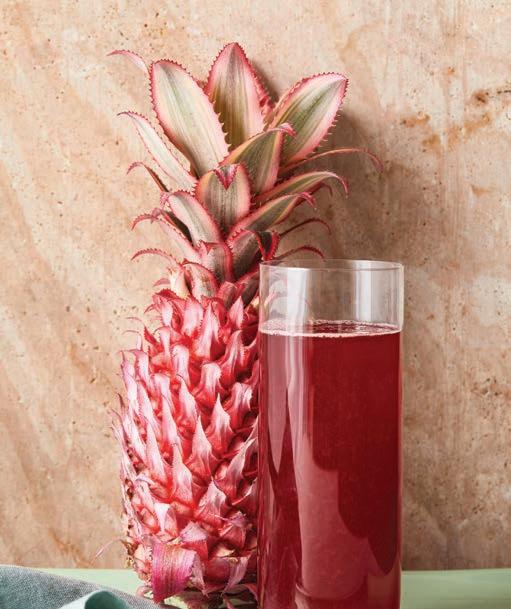
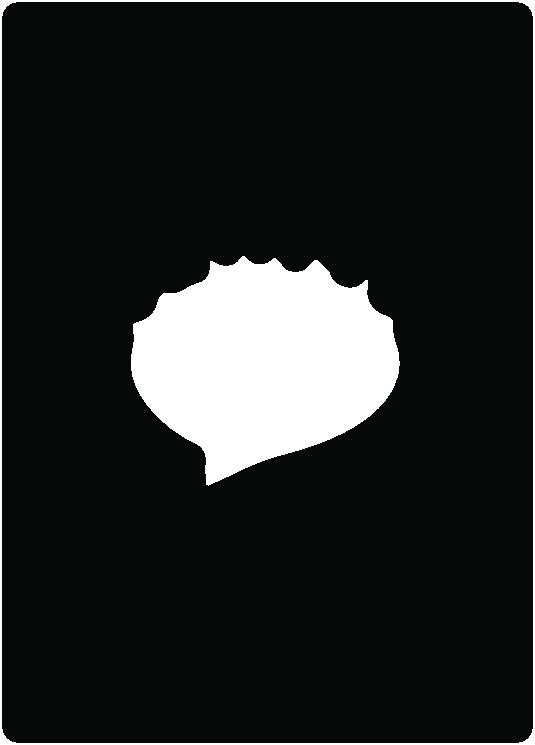
Pineapple-Hibiscus Drink
This delicious and attractive beverage presents with a beautiful ruby color and smooth texture. It stimulates digestive enzymes, soothes the digestive tract and delivers the many benefits of hibiscus and pineapple in a delicious way.
YIELD: 5 CUPS
¼ cup dried hibiscus flowers
2½ cups fresh sweet pineapple juice, strained 2 to 3 Tbsp maple syrup (optional)
Place the hibiscus flowers in a one-quart vessel and pour in three cups of room-temperature filtered or spring water. Cover and leave on the counter for at least eight hours or overnight. Strain and reserve the liquid; discard the hibiscus.
Stir together the hibiscus water and pineapple juice. Add the maple syrup to taste for additional sweetness. Enjoy at room temperature or slightly chilled. Store refrigerated for up to three days.
ecipe and photo courtesy of Chef Divya Alter from her cookbook, Joy (Rizzoli, 2022)
DivyaAlter
Rachel Vanni/CanvaPro
Visit NaturalAZ.com Educate. Connect. Thrive. Make an impact in your community
Green Tabbouleh
This salad is very colorful and fresh-tasting. The vibrant greens flecked with red, orange and black vegetables, as well as the white quinoa, paint an image of a righteously healthy bowl. For variety, add steamed vegetables such as beets and sunchokes [artichokes], or raw cucumbers or jicama.
YIELD: 4 SERVINGS
⅓ cup white quinoa, washed and drained
¼ tsp plus a pinch salt, divided
½-inch fresh ginger, peeled and chopped
6 fresh curry leaves
½ green Indian or Thai chile, seeded (optional)
1 bunch kale (about ½ lb), washed, stems removed and torn into smaller pieces
1 tsp olive oil
Tiny pinch asafoetida [Indian spice]
¼ cup finely diced carrots
2 or 3 red radishes, diced
2 Tbsp celery, finely diced
¼ cup pitted black olives, chopped
¼ cup toasted pine nuts or walnuts
2 Tbsp fresh parsley leaves
1 Tbsp fresh mint leaves
DRESSING
2½ Tbsp olive oil
2 Tbsp fresh lime juice
1 tsp salt
¼ tsp freshly ground black pepper
In a medium saucepan, bring three cups of water to a boil over medium-high heat, then add the quinoa and one-quarter teaspoon of the salt. Cook uncovered for 12 to 15 minutes until a little tail-shoot separates from the seed. Drain. Spread on a plate or tray to let the quinoa cool completely.
In a food processor, finely chop the ginger, curry leaves and chile. Add the kale leaves and pulse until they are finely chopped but not pasty.

In a 10-inch skillet, heat the olive oil over low heat. Add the asafoetida, food-processed kale and carrots. Sauté for about three minutes, until the kale wilts but is still vibrant green and the carrots are softer but still crunchy. Season with a pinch of salt and set aside to cool.
DRESSING
In a small bowl, whisk together the olive oil, lime juice, salt and black pepper. Toast the pine nuts or walnuts in a small skillet on low heat. Move them frequently in the pan until they turn slightly golden in color. Transfer the nuts to a small bowl and let them cool completely.
ASSEMBLY
In a large bowl, combine the quinoa, kale and carrot mixture, radishes, celery and olives. Just before serving, drizzle the dressing over the tabbouleh and toss to mix. Serve at room temperature and garnish each bowl with pine nuts, parsley and mint.
Recipe and photo courtesy of Chef Divya Alter from her cookbook, Joy of Balance (Rizzoli, 2022)
DivyaAlter Rachel Vanni/CanvaPro
Revolutionizing Bone Health
REMS Diagnostics Coming to OsteoStrong
Did you know that nearly one in two women over the age of 50 will suffer an osteoporosis-related fracture in their lifetime? Even more alarming, the one-year mortality rate for women who suffer a hip or femur fracture can be as high as 20 percent, similar to breast cancer. Despite these statistics, many women and men are unaware of their bone density status, as osteoporosis and osteopenia usually present no symptoms.
Traditional methods of assessing bone health have often been limited in both accuracy and convenience. However, a groundbreaking technology is now set to revolutionize
bone health diagnostics—Radiofrequency Echographic Multi-Spectrometry (REMS).
What is REMS Technology?
REMS technology is a state-of-the-art, noninvasive tool that provides a comprehensive analysis of bone health. Unlike traditional DXA scans, which use X-rays, REMS assesses bone density with ultrasound waves. This method is safer as it does not expose patients to ionizing radiation, making it suitable for anyone 21 and older. For the first time, this technology allows for the screening of younger adults, the prevention of osteoporosis in this population, and the frequent assessment of
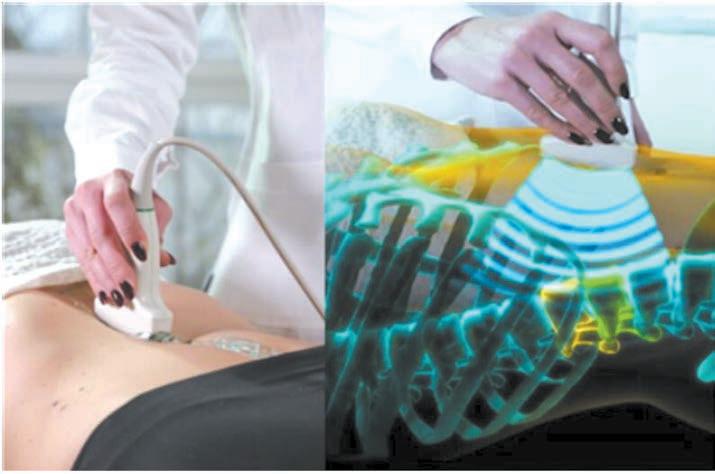
progress during treatment. REMS is FDAapproved and offers more precise measurements of bone mineral density (BMD) and T-scores, along with a quantitative assessment of bone quality.
Benefits of REMS Technology
1. Comprehensive Analysis: REMS provides a fragility score and a detailed fiveyear fracture risk assessment. The fragility score is a crucial indicator of bone quality and microarchitecture, offering a better prediction of future fractures than BMD alone.
2. Accuracy and Precision: REMS technology offers highly accurate and reproducible measurements. It eliminates common DXA concerns related to machine or operator variation and issues caused by artifacts from specific patient conditions or improper positioning.
3. Radiation-Free: One of the significant advantages of REMS is that it is entirely radiation-free, making it a safer option for frequent monitoring.
4. Comfort and Convenience: The REMS scan is quick, painless and does not require any special preparation. With REMS, you can easily get an appointment without the long wait times often associated with DXA scans, and the instant report is interpreted for you.
24 Metro Phoenix & Northern Arizona Edition NaturalAZ.com Technology Spotlight
OsteoStrong in Arcadia is excited to announce the launch of our new venture, Precision Bone Imaging, on August 1. We are bringing REMS bone imaging to Phoenix, offering services to individuals concerned about their bone health and to wellness providers across the Valley who have a desire to expand their offerings by partnering with us and our mobile service.
At Precision Bone Imaging, we are dedicated to offering the best in bone health diagnostics. Located within OsteoStrong Arcadia, we are conveniently situated for residents in the Phoenix metro area.
Years of Experience in Bone Health
With years of experience in bone health counseling, our team at Precision Bone Imaging is equipped to help you understand your REMS report and make informed decisions about lifestyle adjustments to prevent or even reverse osteoporosis. Beyond diagnostics and counseling, we provide highly effective natural healing modalities for bone health and valuable information to guide informed discussions with healthcare partners.
Join Us in Revolutionizing Bone Health
We invite you to be among the first to experience the benefits of REMS technology. Our team at Precision Bone Imaging is committed to providing exceptional care and the needed diagnostics to help you maintain optimal bone health. Booking a REMS bone imaging appointment is one of the most significant steps toward understanding and improving bone health.

For more information and to book your appointment, visit PrecisionBoneImaging.com. See ad, page 9.
Advertorial
Celebrating Unseen Milestones
by Marlaina Donato

By the time we see our backyard gardens explode with abundance or notice a hillside’s vibrant palette of summer, stealthy forces beneath the surface have been at work for many months. Like nature subtly turning the page to another season or the decaying, secret magic of mycelium networks underground, human milestones are not always obvious. The job promotion, dream vacation or new car promptly gets posted to social media, but emotional and spiritual progress deep within our recesses is not usually announced or even capable of being articulated. In a world that values shiny, tangible successes, the stuff that matters to us most gets lost like rare wildflowers in the underbrush.
We struggle for decades to get out of the stranglehold of trauma, labor silently to refine
a spiritual practice or create a new life brickby-brick after devastating loss. Some of us work late into the night honing a craft or work through addiction recovery programs without a visible support system cheering us forward. Sometimes getting out of bed after a long, debilitating period of depression feels like winning the lottery to which very few are privy.
Whether we put an old grievance to rest in a soft grave of forgiveness or master a yoga pose, our most valuable accomplishments are the quiet kind that rarely inspire commemoration. Too many of us refrain from sharing our hidden harvests because we do not wish to appear foolish, or worse, fear being judged, envied or even dismissed by others. Too many of us feel that our internal achievements are insignificant or unworthy of attention. Too many of us minimize the value of what is utterly invaluable.
For today, take a personal milestone from the shadows by honoring it or sharing it. Inspire someone else to do the same. After all, this deeper work—and the cultivation of our intangible joy—is what makes the human journey exquisitely and arduously worthwhile.
Marlaina Donato is an author, visionary painter and composer. Connect at BluefireStudio.art.
25 July 2024
mihailomilovanovic from Getty Images Signature/CanvaPro
Inspiration


Farm Foods in a Capsule
Finding Sustainable, Nutrient-Dense Options
by Kelcie Ottoes
The global dietary supplement industry reached sales of more than $177 billion in 2023. Natural supplements are gaining more attention for their emphasis on wholefood ingredients and for their holistic approach to nutrition.
Growing Demand
A nationwide survey by the Council for Responsible Nutrition found that 74 percent of American adults take dietary supplements, with 92 percent of users reporting that they are essential for maintaining health. According to the National Institutes of Health, although supplements cannot replace a healthy diet, they can help ensure adequate amounts of essential nutrients and improve health. For example, calcium and vitamin D support strong bones, folic acid decreases the risk of certain birth defects and omega-3 fatty acids may help some people with heart disease.
David Perlmutter, M.D., a neurologist and expert in gluten issues, brain health and nutrition, sees an increased role of supplements in the future. He explains, “The world of health care is moving to a place of recognizing the fundamental role of metabolism in general health and compromising health through chronic degenerative conditions. I think there is a place for appropriate use of nutritional supplements when they are developed and validated in this arena.”
Synthetic Supplements
“Most nutritional supplements are the product of something going on in a chemistry laboratory,” laments Perlmutter, adding that manmade supplements contain nutrients that are artificially created, which may be harder for the body to recognize and process.
“Synthetic supplements are loaded up with excipients like magnesium dioxides, silica, etc.,” explains David Stelzer, founder and chief executive officer of Azure Standard, a producer of organic foods and natural products. “A lot of times, the minerals aren’t even predigested. If you’re taking iron, you wouldn’t be getting much better in those pills than if you were sucking on rusty nails, and that is not what the body can utilize.”
Whole-Food Supplements
Sometimes referred to as farm-focused supplements, whole-food supplements are made by extracting nutrients from fruits, vegetables and herbs with an emphasis on raw, unprocessed ingredients. They often contain organic food extracts and include a variety of vitamins, minerals, enzymes, antioxidants and phytonutrients in their natural forms that can boost absorption, compared to synthetic alternatives.
26 Metro Phoenix & Northern Arizona Edition NaturalAZ.com Green Living

Whole-food supplements come in the form of multivitamins, mineral formulas, herbal blends and specialized formulations. Some food products such as energy bars, shakes and powders may also incorporate wholefood supplementation to boost their nutritional value and provide a natural source of vitamins, minerals and antioxidants.
“What we want to look for [in food-based supplements] is that they are sourcing sustainably; that they’re emphasizing organic, raw materials and non-GMO sources; that no harmful chemicals have been used, nor is there any part of the manufacturing process that does a significant amount of damage,” Perlmutter recommends. “Look for the emblems that indicate USDA Certified Organic ingredients. Some manufacturers also have B Corp certification, indicating the company is socially and environmentally sensitive.”
“Look at the source. Where is it from? What kind of products is it made from? What is being used as a flow agent or filler, if anything? How has it been produced? Make sure you can trust the company as well,” says
Stelzer, adding that brands like Garden of Life, AzureWell, MegaFood and Standard Process promote their commitment to quality and transparency.
Shopping Tips
• Certifications: Choose products that are Food Alliance Certified, USDA Certified Organic, Demeter Certified Biodynamic, Non-GMO Project Verified and Rainforest Alliance Certified.
• Ingredients: Opt for organic ingredients and avoid supplements with artificial colors, flavors and fillers.
• Nutrient Density: Prioritize supplements that contain a variety of vitamins, minerals and phytonutrients from whole food sources.
• Manufacturer: Visit brand websites, looking for the transparency of their manufacturing, quality control and sustainability disclosures.
“Food should be our medicine,” insists Stelzer. “Supplements, in and of themselves, should be the exception rather than the rule. There are some folks with exceptions. When your body has been depleted in nutrients for an extended period of time, like those recovering from serious illnesses, supplements help their bodies to catch up. Also, if your body is depleted and showing signs of fatigue or illness, then there’s definitely a place for supplements.” As with any dietary changes, it is important to consult with a healthcare professional before starting something new.
Kelcie Ottoes is a content writer for sustainable businesses, specializing in blog posts, case studies and white papers. She is a frequent contributor to Natural Awakenings.
27 July 2024 Viktor LA/Shutterstock
Summer Splash
Keeping Cool With Water Fitness
by Megy Karydes
Whenever we’re swimming or participating in other water-based activities, all of our senses are engaged and exhilarated. Aquatic sports can help us stay fit, strong and cool during the hot summer months. Here are a few recommendations to remain safe and reap all of the splashy benefits.
Learn to Swim Early
Cullen Jones, a four-time Olympic medalist and the first African American swimmer to hold a world record, credits his parents for encouraging him to learn to swim even after he nearly drowned at a water park when he was 5 years old. “I recommend getting
infants into the water as early as 6 months old. This helps the child get acclimated to the water and pool environment, easing things when it’s time for professional swimming lessons by a trained instructor,” says Jones, the water-safety expert for Leslie’s Inc., a pool- and spa-care retailer.
Jane Brenner, a water aerobics instructor and lifeguard at YMCA of Metro Chicago, similarly believes that it is never too early to expose young children to water and never too late to learn how to swim. “I see people starting their relationship and journey with water in their 50s, 60s and 70s,” she says. “And I think that’s just as beautiful.”
Water-Based Exercises
Jones notes that any exercise can be done in the water for the added benefit of staying cool. Activities such as running, aerobics, Zumba, cycling and resistance training become a bit harder in the pool, upping the workout benefits.
Hydrostatic pressure is another advantage. “When you get into a pool, even if you’re just holding on to the wall, even if you’re not doing anything, you are wearing a gentle compression sleeve around your whole body,” Brenner explains. “The water is pushing down on you in a way that you barely even notice. You can’t register that

28 Metro Phoenix & Northern Arizona Edition NaturalAZ.com Fit Body
nomadsoulphotos/CanvaPro

slight increase in pressure, but it’s more than the air, and that’s going to increase blood flow. It’s going to decrease pain and swelling. It’s going to do all that while decreasing impact on joints.”
“While other activities may target only one region of the body, water sports—and in particular, swimming—offer a full-body workout,” Jones asserts. “When it comes to swimming, you are using your legs to kick, your arms to paddle and your core to hold it all together. Swimming delivers a whole-body workout and mind-enhancing experience.”
While people can and do enjoy being in the water without knowing how to swim, Brenner notes that anyone that feels they can’t learn is selling themselves short. “I really believe that there is space for a relationship with swimming and water in every person’s life,” she says.
Jones admits it took working with five swim coaches before it clicked for him. Had it not
been for his parents’ persistence, he never would have become an Olympic swimmer and gone on to win medals.
Water Safety Is Paramount
According to a 2023 survey commissioned by Leslie's and conducted by The Harris Poll, only 63 percent of U.S. adults say they are very comfortable being around water, and as much as 36 percent of those surveyed say they do not know how to swim. Nearly half the parents of children under 18 say their child does not know how to swim, and 61 percent say their child has not taken swimming lessons. At the same time, almost 30 percent of parents say they are concerned about their child drowning.
“Swimming lessons save lives,” Jones says. “It’s also an important life skill that can open up a whole new world of recreational and athletic possibilities, such as boating, fishing and competitive swimming,
among others.” Still, Brenner and Jones say non-swimmers may enjoy the benefits of being in the water, whether to stay cool in the summer or to stay healthy and fit, both in mind and body.
Brenner teaches water aerobics to people from all walks of life and all ages. She notes that there is a real sense of community that happens in those 50-minute classes. “People are bringing cookies, and others are telling us about the garage sale that’s happening down the street,” she quips. In addition to the physical benefits of water fitness, coming together at the community pool or in a natural body of water offers mental-health rewards and fellowship.
Megy Karydes is a Chicago-based writer and author of 50 Ways to More Calm, Less Stress: Scientifically Proven Ways to Relieve Anxiety and Boost Your Mental Health Using Your Five Senses.
29 July 2024
from Getty Images Signature/CanvaPro
FatCamera
The Kindness Cure
Helping Ourselves by Helping Others
by Maya Whitman
“Love and compassion are necessities, not luxuries. Without them, humanity cannot survive,” says the Dalai Lama, who celebrates his 89th birthday this month. Kindness is critical to our existence, and altruism—the authentic inclination to help or inspire others—offers health benefits for both the giver and receiver. According to Waguih William IsHak, a professor of psychiatry at Cedars Sinai Medical Center, in Los Angeles, repeated acts of consideration for others boost oxytocin (the love hormone), dopamine (the feel-good chemical) and substance P (a key neurotransmitter in pain reduction).
Benevolence not only make us feel good, but also provides health rewards. Research published in Psychoneuroendocrinology in 2017 shows a correlation between generosity and favorable changes in immune-cell gene expression, most notably helpful in the presence of cancer and cardiovascular disease.

Being kind to others can even improve our own mental health. A 2021 study published in Frontiers in Psychology found that participants with low-to-moderate levels of mental well-being experienced mental health improvements after performing acts of kindness for others. A 2022 study in The Journal of Positive Psychology concluded that acts of kindness were more effective in reducing anxiety and depressive disorders than cognitive behavioral therapy.
Everyday Philanthropy
Applying genuine thoughtfulness in our daily lives ripples outward. “Unlike random acts of kindness, intentional kindness is not always easy or convenient, but it’s always impactful,” says Tracey Gates, a kindness ambassador, author and wellness coach in Pennington, New Jersey. “It’s inviting the new student to sit at your table or being late for your appointment because a friend was in need.”
To make meaningful connections, Gates recommends employing conscious compassion, which has been pivotal in her own journey through a stressful work environment, caring for her mother and negative news when her health buckled under an autoimmune disease. “I needed to do something to tip the scales back toward positivity in my life, so I decided to conduct an experiment,” explains Gates. “If daily stress could impact me physically and emotionally, what would happen if I put a daily dose of kindness on my to-do list?”
Inspired by her late father, who always requested “a few kind words” instead of tangible gifts, she challenged herself to craft an unexpected, handwritten letter of appreciation to a different person every day for one year. The results were transformational in her own life and health and led to her book, The Power of a Few Kind Words: Create a More Meaningful Life, One Letter at a Time.
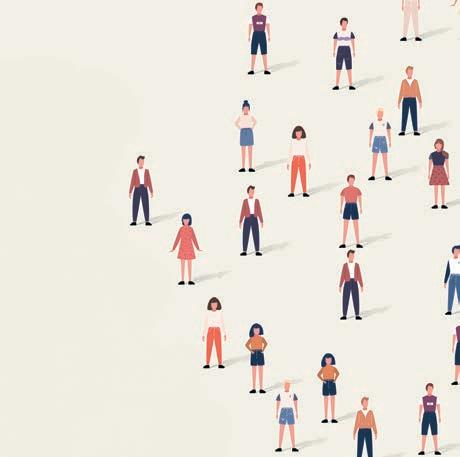
30 Metro Phoenix & Northern Arizona Edition NaturalAZ.com Healing Ways CALENDAR Check out the latest events at naturalaz.com/calendar
Educate. Connect. Thrive. Make an impact in your community

“What I learned is that we are much more alike than we are different. We all just want to know we matter.”
Reaching out to others “can be as simple as sharing your time with no agenda, being curious, asking questions or offering to walk someone’s dog,” attests Jennifer Schmeisser, a health and wellness coach in Dublin, Ohio. “Kindness is much more than being polite. The world throws so much at you, and approaching it from an intentional place of kindness versus overwhelm is a game-changer.”
As a dedicated mother of an autistic son, Schmeisser has experienced unkind responses from strangers through the years, something she has taken as an opportunity to teach others sensitivity simply by being a positive example and not lashing out. “The
intrinsic value of kindness is a larger picture of humanity outside oneself, regardless of gender, age, religion or ethnicity.”
For Gates, a more compassionate society begins at home. “If you want kindness, empathy and compassion to be core values in your child’s life, then it needs to be a core value in your life,” she says. “As a family, share each night around the dinner table how you were kind today and how and if someone was kind to you.”
Compassion for Ourselves
Talk of “self-care” is common these days, but to achieve well-being, we must put it into practice. “For me, self-kindness is letting go, not taking all the responsibilities on my shoulders and letting myself be human. Kindness is forgiving my flaws and allowing space for the hard emotions, too,” says Schmeisser.
For Gates, being kind to ourselves makes it easier to be kind to everyone else. It also involves unplugging from screens and reconnecting to others in real time. “Get out of your chair and put your phone down,” she affirms. “Ask a colleague how their vacation was or how life with a new puppy is going. Kindness and benevolence are readily available medicines to ease the burden of our technological age.”
Maya Whitman is a regular contributor to Natural Awakenings.
31 July 2024
Yogendra Singh from
corelens/CanvaPro
Planting Seeds of Knowledge
Teaching Kids About the Origin of Foods
by Thais Harris, BCHN
There is a growing disconnect between children and the origins of their food. It stems from the urbanization of communities and the prevalence of processed foods. As a result, many children don't know how their food is grown, processed and brought to them, contributing to a lack of understanding about the nutritional value and environmental impact of their choices.
Why Knowing Food Origins Matters
A 2012 study by Stanford University showed that teaching young children that food is a source of diverse nutrients and explaining
the importance of eating a variety of healthy ingredients significantly improved their understanding of nutrition, and even prompted them to voluntarily eat more vegetables at snack time.
“Gardens are a crucial part of how we change eating patterns and teach about health,” shares Sara McCamant, program director at Ceres Community Project (CCP), a nonprofit that provides meals to people facing health crises. “We put youth at the center of our program with the goal of having them understand where food comes from, as well as learning how to cook it, so it can create health. It is crucial that they
understand the bigger picture of how food is grown and how the food system impacts access to healthy food. Many youth are also very concerned about the environment and climate change, and learning about growing food in a sustainable way gives them a way to make an impact on the environment.”
CCP reports that teens participating in their programs are more motivated to consume vegetables and fruits than other kids their age: 54 percent are eating six or more servings of produce a day. By contrast, only 22 percent of California teenagers that have not experienced CCP activities eat five or more servings a day.
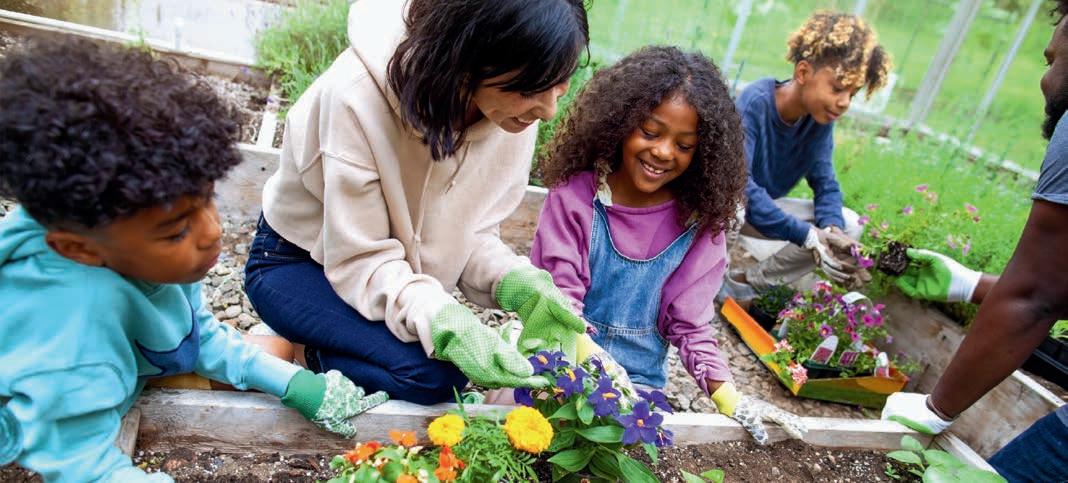
32 Metro Phoenix & Northern Arizona Edition NaturalAZ.com Healthy Kids
FangXiaNuo from Getty Images Signature/CanvaPro
Pilot studies by Harvest for Healthy Kids and the National Institute of Food and Agriculture both found that hands-on experiences with different fruits and vegetables in the classroom, garden and kitchen caused children to be more likely to taste and enjoy a wider variety of foods.
Cultural Heritage
“Children’s limited recognition of food mirrors a deeper loss of cultural identity and heritage,” laments Sebastian White, founder, president and executive director of The Evolved Network. The limited understanding of food through commercial packaging not only deprives children of the rich stories and meanings embedded in their cultural diets, but also reflects broader implications for how they perceive and interact with the world.
“The Evolved Network addresses these issues by integrating the tangible aspects of food preparation, such as cooking skills and community building, with intangible values like cooking with love and the significance of meals as communal gifts,” White explains. “This holistic approach fosters a sense of purpose and inclusivity, treating food education as both therapeutic and educational, with the goal of restoring a deep
connection to food that transcends mere nutrition and taps into cultural identity and self-expression.”
Empowering children with knowledge about their food sources is a vital step toward fostering a healthier and more sustainable future. By engaging in hands-on experiences and understanding the journey of food from seed to plate, children can develop a deeper appreciation for nature, make informed dietary choices and support the environment.
What We Can Do
• Visit local farms or farmers markets. Encourage children to ask farmers about how food is grown and the significance of seasonal produce. This direct connection can spark curiosity and appreciation for the hard work behind each item on their plate.
• Start a family garden. Create a small bed or planter box so children can grow some of their own vegetables, herbs and fruits. This active participation not only teaches them about the growth process, but also instills a sense of responsibility and pride in nurturing and harvesting their own food.

• Cook together using fresh, whole ingredients. Teach children how to read labels and choose organic and minimally processed options. Preparing meals together provides an opportunity for practical learning about nutrition and the importance of making healthy choices. Plus, it’s a fun way to bond and instill lifelong skills.
• Eat as a family. Sit-down meals with kids can leave a lasting and positive impression, fostering a lifelong appreciation of dietary quality and communal dining. A 2007 five-year study published in the Journal of the American Dietetic Association found that more frequent family meals during adolescence predicted a higher consumption of fruits, vegetables and key nutrients, and a lower consumption of soft drinks. The young people also placed a higher priority on meal structure and social eating.
Thais Harris is a holistic nutritionist and author. Her children’s book, Little Red, told from the point of view of an apple, teaches children about the benefits of consuming fresh fruit. Find recipes and resources at NourishTogether.com.
DIMENSIONS

33 July 2024 Heaven & Earth
OF Be in Service to Spirit! Energy Healing and Psychic Readings Personal and Home Cleansings Classes, Practical Workshops, and Guided Meditations Amazing Gifts: Crystals and Pendulums, Jewelry, Rosaries, Malas, Essential Oils, Candles, and MORE! 15% OFF WITH THIS AD https://DimensionsofHeavenandEarth.com 11108 N. Frank Lloyd Wright Blvd., Suite #E-16, Scottsdale, AZ 85259 July 6 Reiki LeveL i Attunement July 13 meet YOuR SpiRit GuideS July 20 pSYchic deveLOpment July 30 meditAtiOn fOR inSpiRAtiOn Exclusive resources, online editorial and more. Visit NaturalAZ.com
Taking Dogs for a Swim
Tips for a Safe and Fun Experience
by Ruth Roberts, DVM, CVA, CVH, CVFT, NAN
Dogs generally love to splash around and play in water, whether in a pool, a calm lake or the open ocean. This might give the impression that all dogs are natural swimmers, but that isn’t necessarily true. As responsible pet owners, it is important to realize that a dog’s swimming skills can vary based on their breed, age and health. Even for dogs that are good swimmers, it is crucial to keep a close eye on their health and safety whenever they are in the water.
Pre-Swimming Preparation
Understanding a dog’s abilities and comfort level in water is crucial. Observing their behavior around water provides insights into their readiness to swim. Signs of comfort such as approaching puddles excitedly or displaying relaxed postures and tail wagging suggest a natural affinity for water. Conversely, hesitance or fear may be indicated by behaviors like barking at waves or avoiding even shallow water.
To create a safe environment, select pools with gentle slopes or steps for easy access and exit. Consider factors like water depth, currents and potential entrapment hazards. Additionally, providing swim accessories such as sunscreen, life jackets, ear protection and paw balm can enhance safety and comfort. Adding water-safe toys can enhance the enjoyment of the swimming experience.
Before allowing a dog to swim, it is essential to check the water quality and temperature. A 2014 study conducted at Chiang Mai University, in Thailand, reported that cold water

below 77° F can elevate a dog’s heart rate and blood sugar levels after just 20 minutes of swimming, potentially straining their bodies, while very warm water above 98.6° F may cause rapid breathing. Water with a temperature around 91.4° F helps dogs stay comfortable and regulate their body temperature during exercise, minimizing the risk of hypothermia from prolonged exposure to cold water.
Ensure the water is clean and free from pollutants and harmful chemicals by regularly testing its quality, especially in pools, to maintain proper pH levels and chlorine content. Chlorine is commonly used to keep pool water clean and free of harmful bacteria, but it can be irritating to a dog’s skin and eyes in high concentrations. A 2012 study published in the Thai Journal of Veterinary Medicine examining the effects of frequent swimming in chlorinated pools found that dry hair (21 percent) and dry skin (19 percent) were the most common side effects observed after the first swim. These percentages significantly increased with more frequent swims, reaching 78 percent for dry hair and 59 percent for dry skin by the fifth swimming session.
Optimizing Swim Lessons
Keeping an eye on the dog while they swim is essential for their safety. Unexpected situations like strong currents or sudden deep spots can happen, and the dog may not know how to handle them. Dogs, like humans, can also become tired while swimming, making it crucial to monitor their energy levels. It can be easy for them to get lost or confused, especially in unfamiliar
34 Metro Phoenix & Northern Arizona Edition NaturalAZ.com Natural Pet
KnoWEwell MEOAM.Love/CanvaPro
surroundings, which is where the owner’s guidance comes in handy.
While the dog is in the water, minimize distractions by avoiding phone use and selecting quiet areas away from crowds or loud noises. Keeping within arm’s reach of the dog allows for immediate response to any difficulties they may encounter. Providing regular breaks and offering encouragement during swimming sessions helps maintain the dog’s comfort and confidence in the water.
“Common mistakes made by dog parents are rushing the process and trying to force a dog that is unsure or frightened,” says Beth Hrnciar, a dog trainer at Follow My Lead, in Connecticut. A dog with little to no swimming experience should never be thrown into the water or allowed to accidentally fall in, she adds, and if a dog displays fear, the swimming session should be terminated.

“Just because a dog is young and healthy doesn’t necessarily mean they can start swimming right away,” explains Hrnciar. Canine fitness instructors can design physical conditioning programs to help dogs avoid unnecessary strain on joints or the cardiovascular system.
Using a proper-fitting life jacket or vest made specifically for dogs will provide support and visibility. “Stick to the shallows until the dog is comfortable, using a floating longline for safety in large bodies of water,” Hrnciar suggests. “Consider having a dog swim with another dog that already knows how to swim and enjoys it, as they learn a lot from modeling other dogs.”
Post-Swim Care
After a refreshing swim, it is essential to prioritize the dog’s post-swim care. Begin by thoroughly rinsing them with clean, fresh
water to remove any chlorine, salt or contaminants that may irritate their skin.
Encourage them to drink fresh water to prevent stomach upset. Dry the dog with a towel, paying extra attention to areas where moisture can linger, including between paws and under the ears. Monitor the dog for signs of discomfort or illness such as ear infections or skin irritation, and seek veterinary care, if necessary.
Swimming can be a fun and enjoyable activity for dogs. With a few precautions and an eye on their safety and health, our furry friends can stay cool and comfortable during hot summer days by the water.
Ruth Roberts is an integrative veterinarian and holistic health coach for pets, as well as the creator of The Original CrockPet Diet. Learn more at DrRuthRoberts.com.
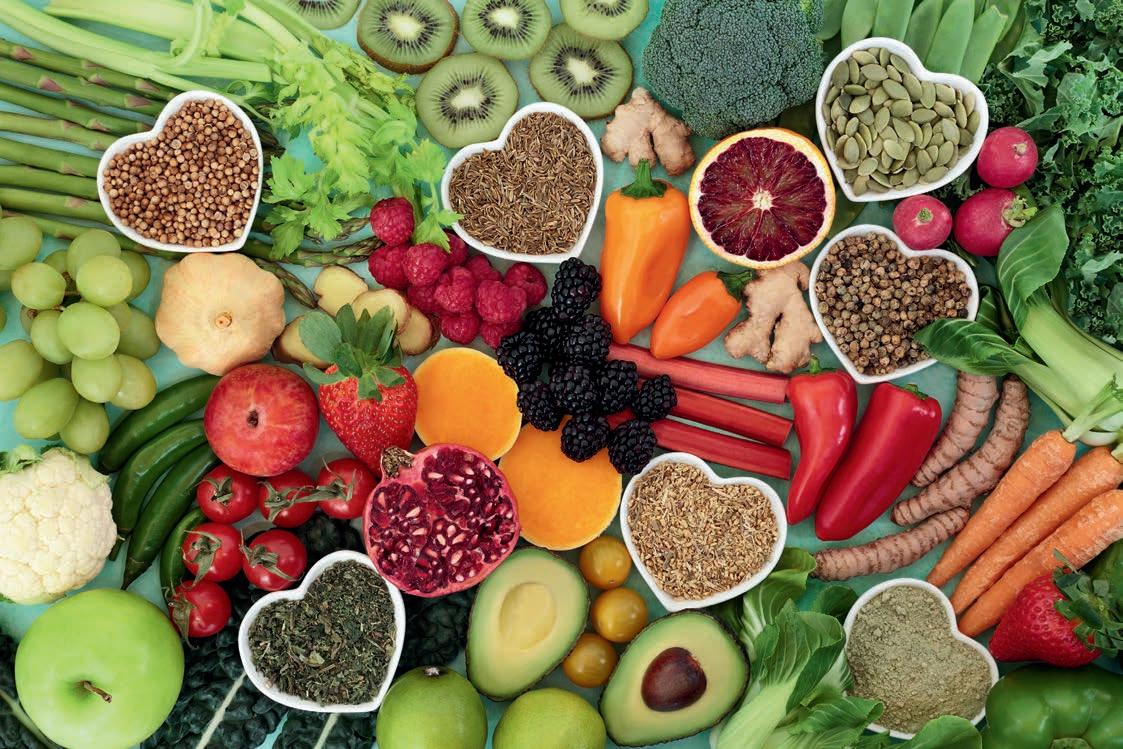

YOU HAVE THE POWER
To Take Control of Your Health and Well-Being











*Start curating your own learning library. KnoWEwell Pathfinder members get 50+ and growing courses for free, plus discounts on expert courses for
a
a
Natural Awakenings readers receive a 30% discount on KnoWEwell memberships. Join at: https://www.knowewell.com/community/join-individuals. Apply code: KWW30
35 July 2024 COURSES 120+ and Growing Whole Health Expert Courses & Films* COMMUNITIES 200+ and Growing Whole Health & Expert Communities
WEBCASTS 700+ and Growing Live and On-Demand Expert Webcasts
less than
smoothie
month!
Business Directory
Connecting you to the leaders in natural health care and green living in our community. To find out how you can be included in the Business Directory, email PhoenixAds@NaturalAZ.com to request our media kit.
Alternative Medicine
LEADING EDGE WELLNESS
MacKenzie Kalt, Owner/Director
4050 E Greenway Rd, Ste 5, Phoenix
480-594-5052
MyLeadingEdgeWellness.com

Providing some of the most advanced natural technologies for those struggling with chronic pain, injuries, stress, migraine headaches, PTSD, insomnia, Lyme disease, autoimmune disorders, skin conditions, and much more. Visit our website to learn more. See ad, inside front cover.
NATURAL MEDICINE & DETOX
2701 N 7th St, Phoenix
602-307-0888
NaturalMedicineDetox.com

We offer a wide range of services that can help just about everyone at affordable prices. We also accept insurance for acupuncture, including Medicare. Please take a look at our website to learn about our services, gifted practitioners, and insurance information and form to see if your plan covers acupuncture. See ad, page 10.
Art Classes
WATERCOLOR ART CLASSES
Allura Westly 3611 E Sunnyside Dr, Phoenix
AlluraWatercolor@cox.net
602-469-0524 • AlluraWaterColor.com

Allura Westly, master teacher, opens her sanctuary studio to all levels, beginner to advanced. Learn fluid color technique, drawing and composition. Small class of eight students. No talent required, just a desire to create.


Chiropractors
IMAGINE WELLNESS CHIROPRACTIC
Dr. Roxane Zamora, DC
822 E Union Hills Dr, Ste 22, Phoenix 623-582-8951
ImagineWellnessChiropractic.com/us

At Imagine Wellness Chiropractic Center, our mission is to provide chiropractic care to increase health, wellness and healing for you and your family. We are focused on corrective chiropractic care and offer nutritional consultations to bring your health to a whole new level! See testimonials on our website. See ad, page 19.
Dentists
NATURAL DENTAL PARTNERS
6930 E Chauncey Ln, Ste 100, Phoenix 602-775-5120 • MyNaturalDentist.com




The doctors at Natural Dental Partners take the time to listen to your concerns and use their extensive experience to help you achieve better health. Using the latest technology (such as low-dose 3D imaging, CEREC, lasers, PRF, ozone and treatment of sleep disorders), they believe in a team approach to help you achieve your healthcare goals. Check out MyNaturalDentist.com or ABreathOfHealth. com to see how they can help you. See ad, pages 3 and 15.
PHOENIX IMPLANT CLINIC
Eddie, Harsini, DDS 7102 W Thomas Rd, Phoenix 602-385-8732 • PhoenixImplantClinic.com

Emphasizing a holistic approach to dental health, Dr. Harsini and his team have a reputation for pain-free procedures and comprehensive post-operative care, with meticulous attention to detail and a patient-focused philosophy. The clinic uses technologically advanced practices, ensuring the best possible results time after time. See ad, page 9.
SHEA DENTAL
Dr. Josh Raiffe, DMD, AIAOMT 11111 N Scottsdale Rd, Ste 120, Scottsdale 480-998-3923
SheaDentalAZ.com

Shea Dental offers holistic dentistry led by Dr. Josh Raiffe, DMD, AIAOMT Accredited. Using advanced technology like CEREC milling, digital impressions, Wand anesthesia, cone beam CT scanning, and SMART mercury filling removal, Dr. Raiffe ensures safe dental practices. Services include implants, veneers and sleep apnea treatments. Accepts most dental insurance. See ad, page 5.
Doctors
BUTTERFLY HOLISTIC CENTER
Melanie Icard, NMD 1430 E Missouri Ave, Ste B127, Phoenix 602-353-7712 • ButterflyHolistic.com

Dr. Icard specializes in biological medicine, peptides, PRP, aesthetics and ozone therapy. Her offerings include holistic anti-aging medicine, pain reversal, natural and traditional aesthetics, ozone therapy, holistic ketamine therapy, and sexual health regeneration. See ad, page 20.
Energy Healing
KIM CARTER, MA, HTCP 15215 S 48th St, Ste 154, Phoenix Kim@IntuitiveKim.com IntuitiveKim.com

Kim is an Intuitive and Healing Touch Certified Practitioner offering guidance when you feel out of alignment with your authentic self. Stress, fear, anxiety and grief/loss throw us off balance, making it challenging to access inner wisdom. Sessions include reading and clearing your energy field; and simple, practical selfhealing tools to keep you balanced and grounded. See ad, page 10.
36 Metro Phoenix & Northern Arizona Edition NaturalAZ.com CLICK ON NaturalAZ.com
WELLNESS CENTER
931 E Southern Ave, Ste 106, Mesa
480-306-7321
RealignYourLifeAZ.com
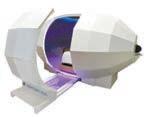
Realign Your Life Wellness Center features the Harmonic Egg—sound and light therapy for physical, emotional and spiritual energy healing. Other services include The Body Code, Life Force Energy with Sound, sound baths and Higher Guidance Life Coaching. See ad, page 11.
Functional Fitness
OSTEOSTRONG
8120 N Hayden Rd, Scottsdale Text/call 602-932-2792
OsteoStrongScottsdale.com
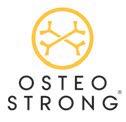
OsteoStrong is a leader in natural bone health and wellness with centers in Phoenix (Arcadia) and Scottsdale (McCormick Ranch). Our m embers report significant improvements in osteoporosis, physical strength, balance and posture in 15 minutes a week. Specializing in osteogenesis without drugs, we’re dedicated to holistically enhancing quality of life. See ad, page 9.
Pest Control
NORTHWEST EXTERMINATING
Organic Program Experts
623-516-2220
NWExterminating.com

We have organic alternatives available with mul tiple programs to meet your needs. Ask us about our year-round pest protection, SMART ecofriendly rodent control 24/7 home protection, and desert guard home sealing service. See ad, page 19.
Pet Care
ANDREA BRIGGS, AKA “CRITTER DOC”
ASAM, Sh Reiki, HTAP Communicator, Healer, Counselor 602-317-1543
1CritterDoc@gmail.com SpiritAnimalWisdom.com

With a gentle healing touch, Andrea provides wellness counseling, energy healing, animal communication, and intuitive counsel for pets and their people.
Products
KAYA HOLISTIC
6102 N 16th St, Phoenix
480-737-0867
KayaHolistic.com

Kaya Holistic is a lifestyle boutique that carries a curated selection of handcrafted, sustainable goods and botanical wellness products. From cultivators and formulators to makers and artisans, we are committed to supporting companies and industries that make a significant impact in our world through sustainable practices and conscious choices. See ad, page 20.
Real Estate
FENG SHUI REAL ESTATE
Jennie Richau
Associate Broker and Certified Feng Shui Consultant, Brokers Hub Realty 602-292-0622
• WooWooAgent.com

A unique and holistic way to buy or sell! Utilizing Feng Shui and various "woo woo" methods to find you a home where you will thrive or sell your home quickly, for the highest value. See ad, page 9.
Schools
HOLISTIC ENERGY ACADEMY
13291 W McDowell Rd, Ste E-1, Goodyear 623-935-0501
TJHofgard@gmail.com
LavendarMoonStore.com

Make a Difference Doing What You Love! Become a Professional Holistic Health Energy Practitioner. Learn the most effective and comprehensive energy modality and techniques with proven results. Become trained in the body’s many energy systems; learn how to energy test, clear, restore, detect and correct energy imbalances. Levels I, II and III.
SOUTHWEST INSTITUTE OF HEALING ARTS
1538 E Southern Ave, Tempe 480-994-9244
Info@swiha.edu • swiha.edu
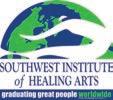
Nationally accredited college offers holistic health and wellness degrees, diplomas, certificates of excellence, continuing education and personal development, oncampus and online. Financial aid available. See ad, outside back cover.


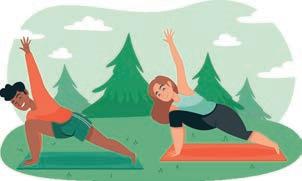
37 July 2024
REALIGN YOUR LIFE
Finding Your Tribe August Emotional Healing September Editorial Calendar Three-Month Planner Whole Body Alignment October
Spiritual Centers
DIMENSIONS OF HEAVEN AND EARTH
11108 N Frank Lloyd Wright Blvd, Ste E16 Scottsdale 732-832-1036
DimensionsOfHeavenAndEarth.com

Dimensions of Heaven and Earth is Scottsdale’s exciting, new one-stop Spiritual Experience: a center of healing and insight combined with a store full of unique gifts from local artisans. With training and tools for your personal development, we are excited to help you take your spiritual journey to new levels! See ad, page 33.
Mark Your Calendar
Soul Heart Collaboration’s Annual Retreat Theme is “Infinite Possibilities”
We help bridge the gap between personal and professional development. You’ll find wisdom, comradery and opportunity. Your all-access in-person/virtual pass includes 18 international speakers representing 7 countries. Join us.
October 4-6
$100 USD/person Info@SoulHeartCollaboration.com SoulHeartCollaboration.com
ECKANKAR
The Path of Spiritual Freedom
1-877-300-4949 • EckankarArizona.org Eckankar.org • HearHU.org Facebook.com/EckankarArizona

Eckankar is an active, individual, creative spiritual practice. A companion and roadmap for your journey home—to the heights of Self-Discovery and GodDiscovery, and beyond. Come along and discover the most secret part of yourself. The key to spiritual freedom lies within you. Explore life as a Soul Adventure. See ad, page 11.

THE SUMMIT LIGHTHOUSE OF PHOENIX
4105 N 20th St, Ste 115, Phoenix 480-442-5020
SummitLighthousePhoenix@gmail.com
SummitLighthousePhoenix.org

Dedicated to sharing Saint Germain’s Violet Flame. All faiths welcome. Learn how you can become a modern day mystic. We are dedicated to sharing the Teachings of the Ascended Masters® to help you bring in joy and peace to the world. Learn what the requirements are to make your ascension. See ad, page 26.
DEADLINE REMINDER!
Please note that all deadlines (advertising and editorial) are the 10th of the month prior to the edition being published. For example, July 10 is the deadline for all August edition submissions.

Color your way to relaxation!
38 Metro Phoenix & Northern Arizona Edition NaturalAZ.com
aluna1/123rf.com
Local Farmers Markets
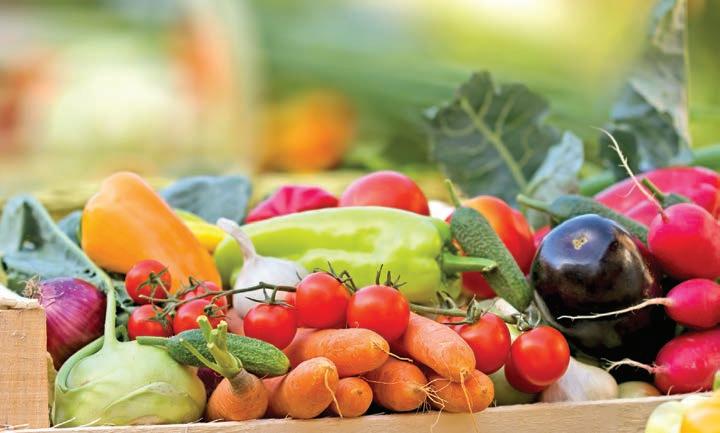
NOTE: Please check market websites and ArizonaCommunityFarmersMarkets.com for more information on days and hours, and any restrictions.
Ahwatukee Farmers Market
4700 E Warner Rd, Phoenix
Sundays Oct-May 9am-1pm Jun-Sep 8am-11am
Facebook.com/AhwatukeeFarmersMarket
Care 1st Farmers Market
328 W Western Ave, Avondale
Tuesdays Jul-Oct 8am-noon ArizonaCommunityFarmersMarkets.com
Carefree Farmers Market
1 Sundial Circle
Fridays Oct-May 9am-1pm Jun-Sep 8am-11am
Facebook.com/CarefreeFarmersMarket
Downtown Chandler Farmers Market
3 S Arizona Ave
Saturdays Oct-May 9am-1pm Jun-Sep 7am-10:30am Facebook.com/ChandlerFarmersMarket
Downtown Mesa Farmers Market
1 E Main St
Saturdays 8am-noon dtMesaFarmersMarket.com
Downtown Phoenix Farmers Market
721 N Central Ave
Saturdays Oct-Apr 8am-1pm May-Sep 7am-11am DowntownPhoenixFarmersMarket.org
Gilbert Farmers Market
222 N Ash St
Saturdays Oct-Mar/Apr 8am-noon
Apr/May-Sep 7-11am GilbertMarket.com
High Street Farmers Market
5415 E High St, Phoenix
Sundays Oct-May 10am-1pm
Facebook.com/Farmers-Market-on-HighStreet-2244771575799425
Mommas Organic Market
Arrowhead Farmers Market
7780 W Arrowhead Towne Center, Glendale
Saturdays Oct-May 9am-1pm | Jun-Sep 8-11am
Facebook.com/Getlocalazfarmersmarkets GetLocalArizonaEvents.com
Mommas Organic Market
Glendale Farmers Market at Cabela’s 9380 W Glendale Ave, Glendale, AZ 85305
Sundays Sep-May 10am-2pm | closed for summer Facebook.com/Getlocalazfarmersmarkets
GetLocalArizonaEvents.com
Old Town Scottsdale Farmers Market
3806 N Brown Ave
Saturdays 8am-1pm
ArizonaCommunityFarmersMarkets.com
Power Road Farmers Market
4011 S Power Rd, Mesa
Monday-Saturday 9am-5pm | Sunday 9am-4pm PowerrdFarmersMarket.com
Roadrunner Park Farmers Market
3502 E Cactus Rd, Phoenix
Saturdays Oct-May 8am-1pm | Jun-Sep 7-11am
Facebook.com/RoadrunnerParkFarmersMarket
Singh Meadows Farmers Market
1490 E Weber Dr
Fridays, Saturdays & Sundays 8am-2pm Facebook.com/SinghFarms



Sun City Farmers Market 16820 N 99th Ave
Thursdays Oct-May 9am-1pm
Facebook.com/Sun-City-Farmers-Market631299790224049
The Capitol Farmers Market
1700 Adams St, Phoenix Thursdays 10:30am-1:30pm ArizonaCommunityFarmersMarkets.com
Uptown Farmers Market 5757 N Central Ave, Phoenix
Wednesdays Oct-Apr 9am-1pm & May-Jun 8am-noon
Saturdays Nov-Apr 9am-1pm & May-Oct 8am-noon UptownMarketAZ.com
Verrado Community Farmers Market N Market Pl & W Main St, Buckeye Sundays Oct-Jun 9am-1pm Facebook.com/VerradoCommunityFarmersMarket
NORTHERN ARIZONA
Farmers Market in Old Town Square 1042 N Main St, Cottonwood Wednesdays 4-8pm (check months/times throughout year)
Facebook.com/FarmersMarketatOldTownSquare
Flagstaff Community Farmers Market 211 W Aspen Ave, City Hall Parking Lot Sundays May-Oct 8am-noon FlagstaffMarket.com
Prescott Farmers Market
Dignity Health, YRMC 900 Iron Springs Rd, Miller Valley Lot Saturdays 7:30am-noon PrescottFarmersMarket.org
Sedona Community Farmers Market
Wells Fargo Bank Parking Lot 2201 W State Rte 89A, West Sedona Sundays May 14-Oct 15 8am-noon | Sundays Nov 5-Apr 28 11am-3pm Sedona-Farmers-Market.com
Verde Valley Farmers Market Hollamon St and Main St, Camp Verde Saturdays May-Oct 8-11am Facebook.com/VerdeValleyFarmersMarket
Windmill Park Farmers Market 9950 E Cornville Rd, Cornville Thursdays 2-6pm (check months/times throughout year)
Facebook.com/WindmillParkFarmersMarket



39 July 2024
123rf.com/lola1960

